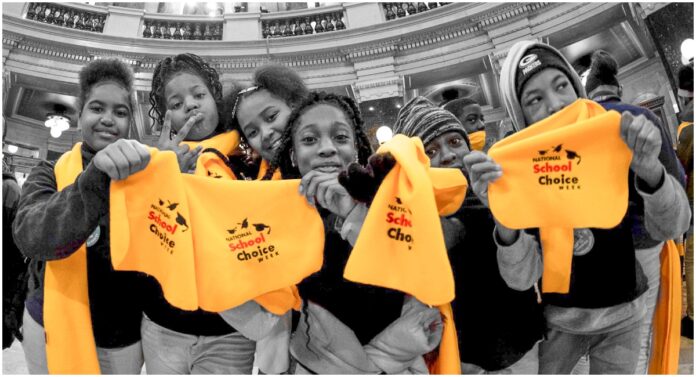The latest report on school choice in Wisconsin again shows choice schools outperform public schools in Milwaukee’s biggest cities and rural areas.
The Apples to Apples report from the Wisconsin Institute for Law and Liberty compares proficiency rates in math and English language arts in public schools, charter schools, and private schools as part of Wisconsin’s voucher program.
The report says the idea is to put “schools on a level playing field to fairly assess education.”
“Each iteration of Apples to Apples has found that private schools in the choice program and many forms of charter schools outperform their traditional public school peers on a level playing field, and this year is no different,” the report states. “But it is important to emphasize that we report all results, whether favorable to school choice or not.”
Those results show some charter schools have occasionally underperformed compared to public schools.
But as a whole, the Apples to Apples report shows choice schools in Milwaukee significantly outperformed Milwaukee Public Schools.
● Students in the Milwaukee Parental Choice Program showed proficiency rates in private choice schools 8.6% higher in English/language arts and 6.9% higher in math on average than proficiency rates in traditional public schools in Milwaukee.
● Milwaukee charter school students showed 6.9% and 6.5% higher proficiency in ELA and math, respectively, than traditional public schools.
Statewide, that gap between choice schools and traditional public schools was “about 3.1% higher in ELA for students participating in school choice statewide than traditional public-school students. For the first time, proficiency was found to be lower in math.”
The report goes on to highlight that the biggest tell-tale sign of an achievement gap is family income, not race. Though Wisconsin schools continue to see a large racial achievement gap.
“Statewide, a school with 100% low-income students would be expected to have proficiency rates 47.3% lower in ELA and 45.2% lower in math compared to a hypothetical school with zero low-income students,” the authors wrote. “For African American students, that gap is 23% in ELA and 26% in math. Hispanic students have an achievement gap of approximately 6.7% in math, but no significant gap was found in ELA.”
Rural schools, the report notes, continue to struggle.
“On average, proficiency in Wisconsin’s rural schools is significantly lower in both ELA and math than urban, suburban, or town schools,” the report states.
There are no quick fixes, according to the Apples to Apples report, but the authors say there’s a chance for Wisconsin students to do better.
“There may be a glimmer of hope for improvement in ELA with the passage of a bipartisan reading bill during the most recent legislative session,” the report adds in its conclusion. “In the coming years, it will be interesting to follow whether the implementation of this bill leads to improvement in reading across the state. In the meantime, educational options like private school choice and charter schools continue to provide an important alternative.”






![Protecting Portland: No Good Deed Goes Unpunished [REVIEW]](https://www.wisconsinrightnow.com/wp-content/uploads/2025/07/portland-356x220.jpg)
























